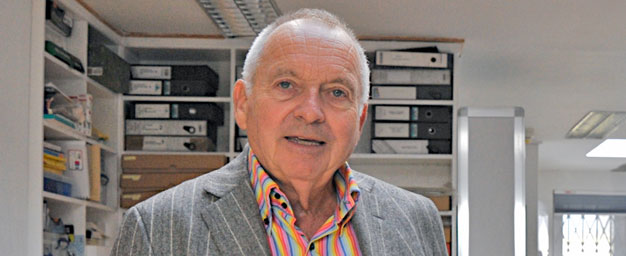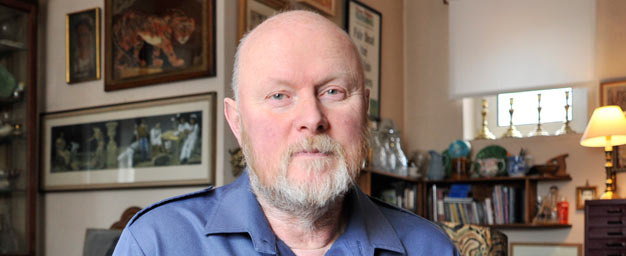Jenny Hand, The Estate of Sir Alfred Munnings
Sir Alfred Munnings painted in the early 20th century and was heavily influenced by the French school of art, but it is his equestrian portraits from the 20s and 30s for which he is most well known, and which people will most recognise today.
Munnings was elected president of the Royal Academy of Arts in 1944, and at his death in 1959, his wife turned their home in Dedham into an art museum, following his wish for his paintings to be viewed by a wider audience.
Jenny Hand is the Museum Director at the Munnings Art Museum.
"The income that we get from the Artist's Resale Right is absolutely vital in being able to run the museum as we run it. It allows the possibility in scope for a legacy such as ours to develop, and it does makes up a third of our income - if it didn't exist we wouldn't be in this position and we wouldn't be able to be looking forward to the future the way that we are."
Cortina Butler, The Estate of Reg Butler
Figurative sculptor Reg Butler worked from the post-war period onwards, producing artworks in bronze and iron, before then culmintating in painted bronze in the 70s. Reg Butler's wife became his heir, and his son and daughter support her in the day to day running of the estate.
Maintaining an estate takes time - from looking after archives to responding to queries, and royalties from the Artist's Resale Right (ARR) helps towards covering that.
"If you don't reward artists for the work that they do you won't get it, because they won't be able to make it and what the ARR does is enable artisan estates to maintain their work and the records
about their work and the country's cultural heritage in a sustainable way."

Robert Scott, William Scott Foundation
William Scott (1913-1989) is best known for his still-life and abstract paintings. He exhibited widely throughout his life both in the United Kingdom and abroad and rapidly acquired an international reputation. Scott’s two sons, Robert and James, established the William Scott Foundation in 2007 to continue cataloguing his work and support research into Alzheimer’s, the disease that cut their father’s life short.
Robert Scott had known about us for over 20 years before we campaigned together for the Artist’s Resale Right to be extended to artists’ heirs and beneficiaries.
The full implementation of the Right in 2012 meant a promising future for the Foundation.
“We do receive some revenue through reproduction of William’s Scott work but this remains relatively small compared to the potential income from the Artists Resale Right royalties.
“It will be critical to the future of the Foundation, bringing a significant contribution to our running costs. It could even be the difference between the Foundation continuing its work and having to close.”

Richard Riley, The Estate of John Craxton
John Craxton (1922-2009) is a key figure in post-war painting. Influenced by William Blake, Samuel Palmer, Graham Sutherland, and European artists such as Picasso and Miro, he settled in Crete and continued to develop his Romantic pastoral themes in sunburst images inspired by Byzantine mosaics. Richard Riley manages his estate.
“Copyright was very important to John,” he says. “He was pleased when the Artist’s Resale Right came in. For John, he saw that it would be of help to me, especially now that it has been introduced for beneficiaries.
“And when I die these royalties will go to the family trust which helps musicians. That will be the real legacy. It will help people who just need that bit of extra money. Even a few hundred pounds can make a big difference to them.”